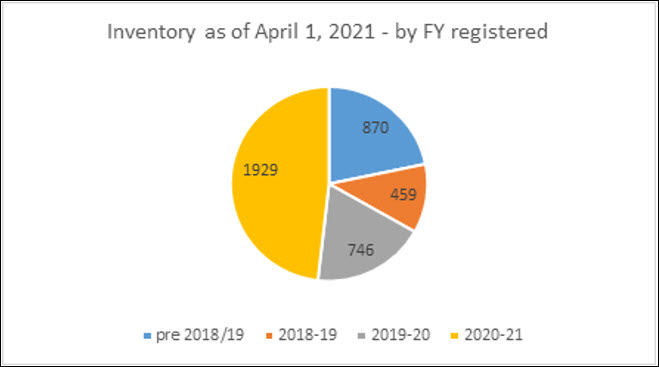Questions and answers – Appearance before ETHI
Main Estimates 2021-22
May 14, 2021
Q1: With the permanent funding you received (3M), were you able to address the major access regime issues, if so how?
- With the adoption of Bill C-58 in 2019, that granted me new powers, I received (1.7 million/year) that allowed me to hire 15 FTEs (they were all hired before March 2021) over two fiscal years.
- Out of Budget stabilization (backlog) 27 FTEs were granted and split as follows:
- 21 for the Investigations and Governance Sector
- 6 for enabling functions (corporate services and communication services).
- These 21 FTE are to be coming in 2021-22 as most of the hiring of last year 2020-21 were vacant positions mix with funding from the amendments.
- The re-profiling of funds will also be used to finance our important cloud-computing project to provide a full suite of collaborative tools to employees.
- In our Innovation Agenda and once the pandemic is behind us, the OIC will implement a hybrid work model for its employees.
Q2: Were you able to identify any program efficiencies by having people mostly working from home during the pandemic?
- At the beginning of the pandemic, like other institutions we had to adjust quickly to the new realities and challenges associated with working from home
- Overall, it is fair to say that the situation significantly contributed to accelerating
- the shift to electronic format and processes(examples: efile, epost, esignature, use of collaborative tools such as videoconferencing and training platforms (Zoom, teams, webex).
- Working remotely and telework arrangements, allowing a more geographically diversified workforce.
- In terms of efficiencies’ within my office: once my employees were provided with proper equipment and accommodations, there was no significant change in efficiency due to working from home.
Q3: The Government provided you with additional funding to address your own backlog. Can you outline the progress you have been able to make so far with regard to your inventory?
- On April 1, 2020, my inventory of open complaints stood at 4024. On April 1, 2021, the inventory total was essentially unchanged at 4004.
- While we were unable to reduce the inventory, we have kept pace with the complaints coming in during the pandemic, and have in fact improved our results in terms of percentage of files closed
- In 2020-21, we closed about 99% of complaints registered compared to the previous year, when we closed 90% of what we registered.
The inventory of complaints as of April 2021 breaks down as follows:
| Pre 2018 - | 870 |
|---|---|
| FY 2018-19 - | 459 |
| FY 2019-20 - | 746 |
| FY 2020-21 - | 1929 |
| Total = | 4004 |
Q4: How many investigations were completed in 2020-21 and how does this compare to previous years?
Ultimately, we completed 4060 investigations in 2020-21.
- Last year, we closed our second highest amount of complaints, surpassing our totals for every year prior to last year, which was a record year for the OIC.
- These break down as follows:
|
OUTCOMES |
2020–21 |
2019-20 |
||
|---|---|---|---|---|
|
Well founded |
644 |
16% |
597 |
11% |
|
Not well founded |
225 |
5% |
344 |
6% |
|
Resolved |
2,866 |
71% |
4,057 |
73% |
|
Discontinued |
325 |
8% |
530 |
10% |
|
TOTAL |
4060 |
100 % |
5528 |
100% |
Q5: Where does Canada situate itself in terms of access to information in comparison to other countries?
- There are different indexes. According to Global Right to Information Rating, Canada ranks 50th in the World with a score of 93/150
- The Global Right to Information Ranking evaluates the state of Access legislations around the world, and allows us to see how Canada’s Access legislation compares to that of other countries.
- It does not however measure the effectiveness of the regime itself. Experience shows that no matter how good a law is, the application of the law must be taken into consideration. Some countries with very progressive legislation offer limited access in practice. For example, we need to keep in mind that just because a law requires information to be provided within 60 days does not necessarily mean this is what is happening on the ground.
- Rationale from RTI for ranking: Although it was once among the world's leaders in terms of government openness, Canada now ranks relatively poorly on the RTI Rating, mainly due to global progress in this area, which Canada has failed to keep pace with. The law has only been updated in bits and pieces since it was originally adopted in 1983 and therefore reflects many outdated norms.
Q6: What could we do to improve our ranking?
There are 3 main areas where the score could be significantly improved:
- Coverage (14/30)
Ministers’ offices, parliamentary entities and the Judiciary are not covered (partly addressed by the Commissioner’s recommendation to add Ministers’ offices to Part 1)
- Requesting procedures (21/30)
Delays, no limits for extensions and fees (partly addressed by the Commissioner’s recommendations on delays and comments on the state of the system)
- Exemptions (13/30)
Several broad class exemptions without time limits, no general public interest override (partly addressed by the commissioner’s recommendation to fix some exemptions and to add a public interest override)
